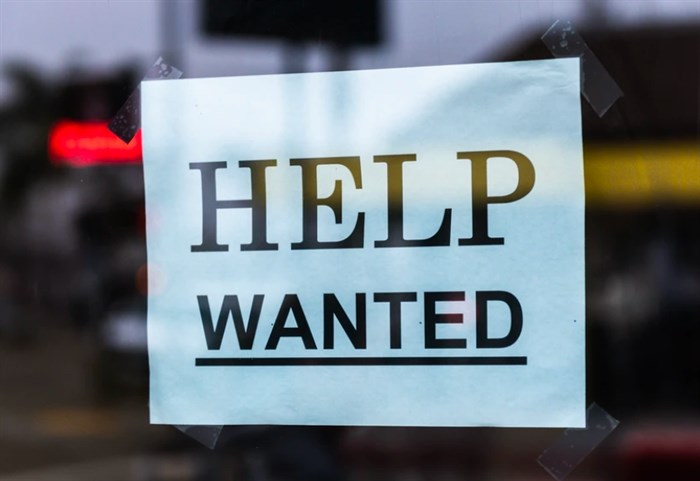
Image Credit: Unsplash/Tim Mossholder
September 26, 2021 - 11:30 AM
Even though B.C. and the world were locked down during the early days of the COVID-19 pandemic in 2020, the hotel industry suffered more in 2021, especially in the Thompson-Okanagan-Kootenay tourism region.
Statistics provided by the B.C. Hotel Association show that room occupancy hit 72.4% from January through August, 2019.
That dropped to 40.7% in 2020, even though much of the world was shut down, people stayed in their homes and, for months, shopping malls and restaurants were closed.
READ MORE: iN PHOTOS: Are people staying home? These photos tell the story
Despite the fact restrictions were eased in the summer of 2020 and travel within B.C. has increased, the provincial hotel occupancy rate has fallen to a mere 35.5% this year.
“In 2021, coupled with the lack of demand – no meetings, no conferences, no events, no music events, no crews, no corporate travel, no government travel, no international travel, no U.S., travellers – we have lost 30% of our workforce since 2019,” Ingrid Jarrett, president and CEO of the B.C. Hotel Association told iNFOnews.ca.
The 30% number is a national figure but is reflective of what happened in B.C., she said.
“As we’re looking to recover, hoping to grow occupancy, we can’t grow occupancy because we don’t have anyone to actually clean the rooms or open the restaurants or cook in the kitchens or any of those kinds of things,” Jarrett said. “We have whole wings of hotels that are closed because we have nobody to work.”
Two thousand rooms have closed in B.C. since the start of the pandemic, she said.
With the wildfires and mass evacuations this summer, hotel rooms in places like Kamloops were in high demand but they were not always full, she said.
And many of those rooms were paid for at government rates that are much lower than what would normally have been charged.
In the Okanagan, a busy summer came to a screeching halt when COVID restrictions were imposed on the Central Okanagan, Aug. 6. Those included the closing of bars and nightclubs along with a recommendation to stop non-essential travel into and out of the region. Some of those restrictions are still in place.
READ MORE: Bars and nightclubs hardest hit by new COVID restrictions in the Central Okanagan
“We had hundreds of thousands of dollars of cancellations in one day,” Jarrett said. “And then there was the smoke and fire, so people were very concerned about air quality. Then there was the state of emergency because of the fires, which also restricted people traveling to the Okanagan.”
The association does not break down the occupancy rates by region but does list domestic overnight stays – nights B.C. residents spend away from home – by region. In the most recent week, Sept. 6 to 12, visitation was up 4.2% in B.C. compared to 2019, but in the Thompson-Okanagan it was down 6.1%.
go2HR – an industry association that provides human resources services – has an online employment tracker tool that gives detailed breakdowns of employment stats by region.
It shows the accommodation sector in the Thompson-Okanagan-Kootenay region was devastated this year, especially in August.
Employment in the region’s accommodation sector dropped to 3,250 people in August compared to 9,250 last year and 10,250 in 2019.
The food and beverage sector showed a drop of 3,000 employees to 16,250 from the year before. There were 23,250 employed in that sector in 2019.
On the upside, recreation and entertainment sector grew by 4,500 people this year to 15,000 from 11,500 in each of the previous two years. Transportation and travel was up by 1,000 from last year to 9,250.
“We’re in a very, very difficult spot,” Jarrett said. “Reservations on the books for the fall, all over the province, are extremely low. There is no certainty that we’re going to see a fall with any kind of demand.”
She’s worried, too, for the ski hills which rely on foreign workers, especially from Australia, where borders are currently closed.
But it’s not just Australia. There are not nearly enough Canadians to work in the industry so it’s heavily reliant on foreign workers.
“All of the access we had previously – international students, working holiday visas, new Canadians, foreign workers, internships – there are about 10 to 20 different sources of international workforce that have always been available to us,” Jarrett said. “We would have had thousands of workers working holiday visas from Australia, New Zealand, England, Ireland and France. These are young people that are travelling and working and these are skilled people in our industry.”
Her association is working with the federal and provincial governments to try to get programs in place so these workers can come to Canada.
She’s expecting it will be, at least, the spring of 2022 before there’s any real recovery both in the workforce and in the number of domestic and international travellers so hotel rooms can not only be opened but filled.
To contact a reporter for this story, email Rob Munro or call 250-808-0143 or email the editor. You can also submit photos, videos or news tips to the newsroom and be entered to win a monthly prize draw.
We welcome your comments and opinions on our stories but play nice. We won't censor or delete comments unless they contain off-topic statements or links, unnecessary vulgarity, false facts, spam or obviously fake profiles. If you have any concerns about what you see in comments, email the editor in the link above.
News from © iNFOnews, 2021